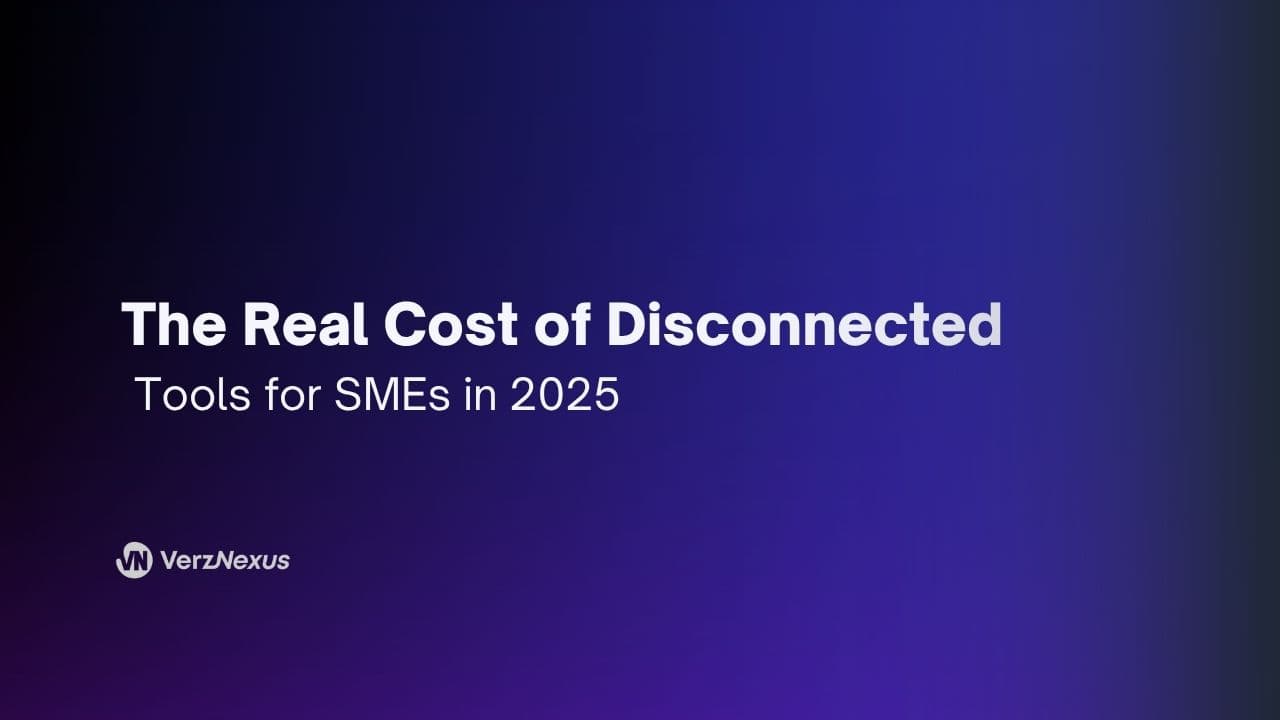Despite the explosion of AI tools in the market, many small and medium-sized enterprises (SMEs) are struggling to see real returns. With options ranging from customer service chatbots to automated marketing platforms, the promise of AI is everywhere. But for many SMEs, more tools simply mean more confusion and little payoff.
Why SMEs Aren’t Seeing AI Results
The problem is not a lack of choice. It is quite the opposite. Current research shows that only 5% of SMEs in Europe are using AI, despite the vast number of tools available. Large enterprises are adopting AI at a much higher rate, leaving smaller businesses behind.
So what is holding SMEs back?
It is not the tech it is knowing where to start. According to Nordic SME research, the top barriers include a lack of AI knowledge and unclear benefits. In other words, having more tools doesn’t help when you don’t know which one to pick or why you need it in the first place.
Why Strategy Should Come Before Tools
A lot of SMEs make the mistake of choosing tools first, then figuring out what to do with them later. But this backwards approach rarely works.
Harvard Business Review notes that successful AI adoption starts by asking two questions:
- How will this create value?
- And what is a good first project?
When SMEs skip these questions, they end up with mismatched tools and unclear outcomes, a common scenario known as the “strategy vs. implementation trap.”
Without a clear goal, even the most advanced AI tool will fall flat.
The Hidden Costs of Too Many Tools
Trying out multiple tools might sound like a good way to experiment. But it is often more expensive and overwhelming than expected. According to MIT Technology Review, many companies are surprised by how much infrastructure is needed to make AI tools perform well.
For SMEs, this can be a major problem. Jumping between platforms wastes time and money. Instead of solving problems, teams end up stuck comparing features or troubleshooting integrations. This “analysis paralysis” spreads attention too thin, and ultimately, no tool gets used to its full potential.
How to Break the Tool Overload Cycle
Start with the Problem, Not the Tools
The best AI implementations begin with a clear business challenge. Use the SMART framework specific, measurable, achievable, relevant, and time-bound—to define what success looks like.
Measure What Matters
Skip the vanity metrics. Instead, use a balanced scorecard to measure AI’s impact across customer satisfaction, employee efficiency, cost savings, and operational performance. McKinsey found that companies using AI in customer service saw cost reductions of up to 45% but only when they tracked outcomes properly.
Take It One Step at a Time
Don’t roll out five tools at once. Break your AI plan into phases. Start with a single use case, test results, and build from there. This gives your team the chance to learn and adapt without risking large amounts of time or money.
Simple Steps to Avoid AI Tool Overload
| Step | What to Do | Why It Matters |
|---|---|---|
| Start with the Problem | Define a clear business goal using the SMART framework | Avoid chasing tools without a purpose |
| Measure What Matters | Track real outcomes like cost, efficiency, and satisfaction | Focus on impact, not vanity metrics |
| Go One Step at a Time | Start small, test results, and scale gradually | Reduces risk and helps your team learn |
What Success Looks Like
The most successful SMEs treat AI as a business capability not a shopping list of tools. They define goals first, then select a tool to match.
Recent research shows that large businesses are now dedicating an average of 5% of their revenue to AI initiatives, with top-performing companies focusing the majority of their AI budgets on transforming core functions and driving innovation. These organizations report stronger outcomes in productivity, cybersecurity, and new offerings.
However, companies that clearly define and track key performance indicators (KPIs) for their AI projects achieve up to 2.1 times greater ROI than those with fragmented or unfocused efforts. In contrast, firms that fail to monitor the impact of their AI investments often see diluted results and reduced value creation.
For comprehensive guidance on AI implementation strategies, visit our reports page for detailed frameworks and case studies.
Industry research also backs this up. According to Forrester, focused AI implementations can generate 315% ROI over three years when properly managed.
Final Thoughts
When it comes to AI, more is not always better. SMEs overwhelmed by endless options often miss the point: success does not come from having 100 tools, but from using one or two really well.
Start with your biggest challenge, define what success looks like, and build from there. With a focused strategy and phased approach, even small teams can unlock big value from AI without burning out or breaking the bank.
FAQs
How many AI tools should an SME start with?
Focus on a single, clearly defined use case with measurable outcomes.
What budget is needed to see AI results?
Organizations investing 5% or more of their total budget into AI consistently see better results than those who spend less.
How quickly can AI show results?
If focused and well-implemented, SMEs can begin seeing impact within 3 to 6 months.



